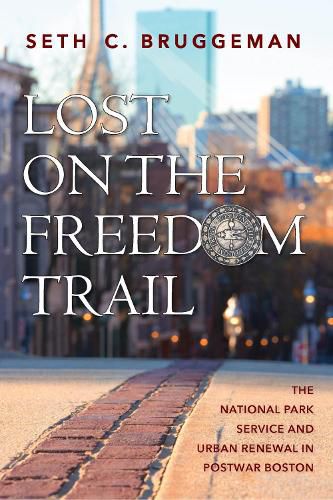Readings Newsletter
Become a Readings Member to make your shopping experience even easier.
Sign in or sign up for free!
You’re not far away from qualifying for FREE standard shipping within Australia
You’ve qualified for FREE standard shipping within Australia
The cart is loading…






Boston National Historical Park is one of America’s most popular heritage destinations, drawing in millions of visitors annually. Tourists flock there to see the site of the Boston Massacre, to relive Paul Revere’s midnight ride, and to board Old Ironsides-all of these bound together by the iconic Freedom Trail, which traces the city’s revolutionary saga.
Making sense of the Revolution, however, was never the primary aim for the planners who reimagined Boston’s heritage landscape after the Second World War. Seth C. Bruggeman demonstrates that the Freedom Trail was always largely a tourist gimmick, devised to lure affluent white Americans into downtown revival schemes, its success hinging on a narrow vision of the city’s history run through with old stories about heroic white men. When Congress pressured the National Park Service to create this historical park for the nation’s bicentennial celebration in 1976, these ideas seeped into its organizational logic, precluding the possibility that history might prevail over gentrification and profit.
$9.00 standard shipping within Australia
FREE standard shipping within Australia for orders over $100.00
Express & International shipping calculated at checkout
Boston National Historical Park is one of America’s most popular heritage destinations, drawing in millions of visitors annually. Tourists flock there to see the site of the Boston Massacre, to relive Paul Revere’s midnight ride, and to board Old Ironsides-all of these bound together by the iconic Freedom Trail, which traces the city’s revolutionary saga.
Making sense of the Revolution, however, was never the primary aim for the planners who reimagined Boston’s heritage landscape after the Second World War. Seth C. Bruggeman demonstrates that the Freedom Trail was always largely a tourist gimmick, devised to lure affluent white Americans into downtown revival schemes, its success hinging on a narrow vision of the city’s history run through with old stories about heroic white men. When Congress pressured the National Park Service to create this historical park for the nation’s bicentennial celebration in 1976, these ideas seeped into its organizational logic, precluding the possibility that history might prevail over gentrification and profit.